James (Jim or Jock) Costigan
Jim was born in Glasgow in on 26th June 1925. His father was Irish and his mother from Arbroath.
In early 1943 he was turned down for aircrew training at a medical interview in Edinburgh because of his eyesight and was applauded by about 40 men as he came out of the interview room. These men were of various nationalities and were hoping for the same result! He then went into the recruiting office across the road and enlisted in the RAF, having told the recruiting Sergeant that he was 18 when, in fact, he was only 17 ½!
He was sent for about eight weeks basic training at a base near Arbroath, followed by stints in Doncaster, Lincolnshire and Byley, near Middlewich. Following this he spent 6 months at a base near Bath training to be an electrical engineer (he was serving an apprenticeship as an electrician in a Clyde shipyard before enlisting) Having completed his training he was sent to Blackpool to await transport to India. Stanley Matthews was a Corporal in charge and his fellow Blackpool and England footballer Stan Mortensen was also there. Here hundreds of men were issued with all the tropical kit they would need in the far east.
Whilst stationed in Blackpool Jim met, in the Tower Ballroom, the girl who would, after his return from the far east, become his wife in 1947.

From there he was sent to Glasgow, where he embarked on a Troopship which then set sail for India, via the Suez Canal, finally reaching Bombay (now Mumbai). He spent 6 weeks at the Worli transit camp where some of the kit was changed, pith helmets being replaced by Australian style bush hats and rifles for Sten guns, and they were trained in jungle survival. Next it was a long rail journey to Calcutta (now Kolkata), where he spent 2 weeks. Jim being the youngest of the group, had to go, at every stop, to the engine to get water for the tea. He then went by road to Cox’s Bazaar, near to the border with Burma (now Myanmar),where he spent one night before moving into Burma.

In Burma Jim’s job was to go out and find downed aircraft and either repair them, or salvage whatever could be recovered, using whatever type of vehicle was available, usually a small pick-up truck style vehicle. One of his other duties was to wait in a tent until, at 2100, he had to walk some distance to where the generator was located, and switch off the lights, then walk back in total darkness. During the next 9 months in Burma, as the Army moved south down the Arakan Road, Jim’s unit followed. There were two US airfields to their rear, which were useful for supplies and replenishing water bowsers. During his time in Burma Jim salvaged a Japanese flag from a crashed aircraft. He is shown here, with comrades, holding the bottom RH corner of the flag.

At one point they were almost caught when the Japanese outflanked the British soldiers and came round behind them, but they managed to avoid capture.
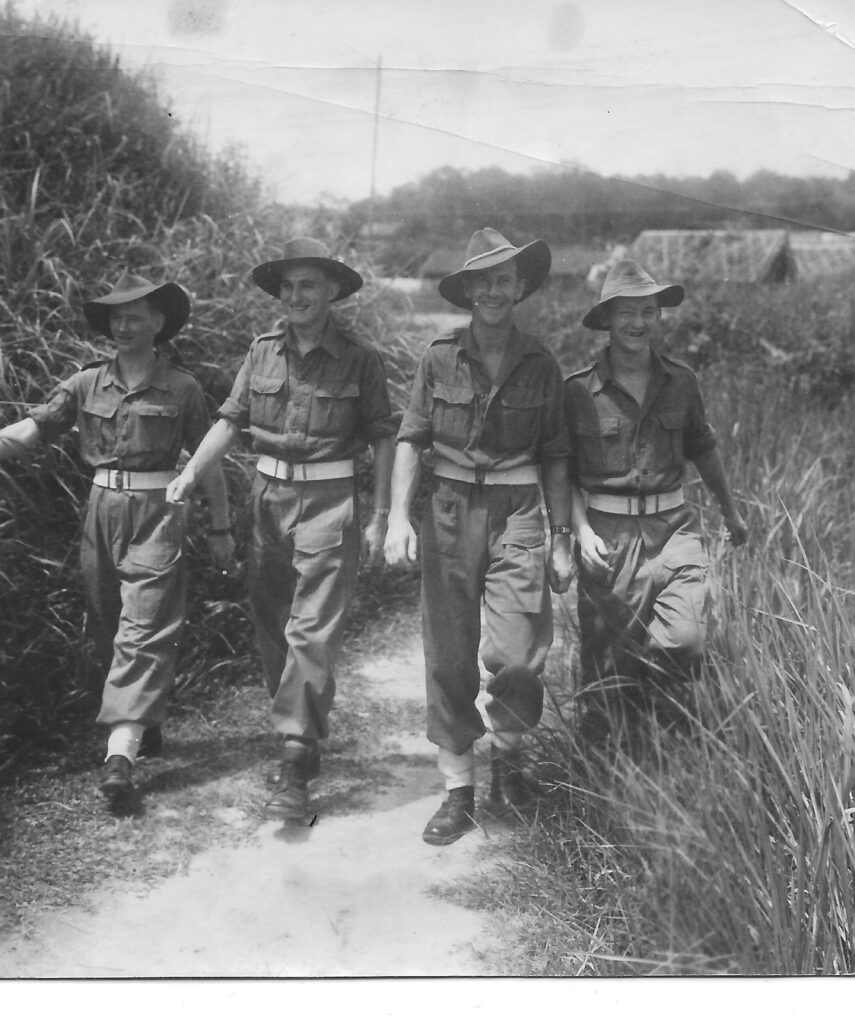
Jim in Burma 1945 ( Jim on RH Side ) 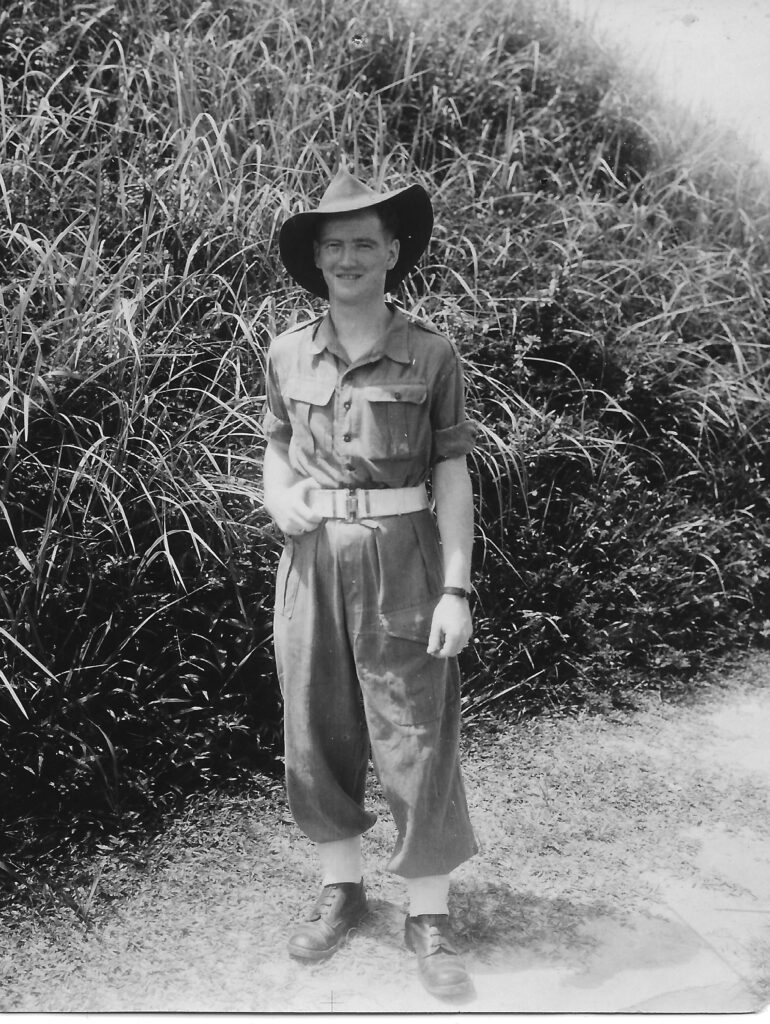
Jim in Burma 1944
Following his time in Burma Jim was sent by sea back to Calcutta where he spent some time at a base inland towards Bombay. During a brief period of leave from here Jim visited the Nainital Province of Northern India from where he had a wonderful view of Mt Everest.
He was then sent overland to Madras in southern India (now Chennai) where he embarked on a troopship bound for Malaya. Just as the ship was leaving port the tannoy announced that the Japanese had surrendered and that they could all have a drink or two.
On arrival off Malaya they were disembarked, via scrambling nets, into landing craft for the final leg to shore. At this time another landing craft, containing about 60 South African troops, ran aground on a sandbank and all lives were lost, drowned.
Having spent a night in a big house Jim’s unit moved on to Kuala Lumpur where, on arrival, they were divided into two’s, each pair proceeding up a different road. They had to be watchful as they were unsure of the reaction to their presence from locals. Jim and his comrade passed two towers which had a very large swimming pool underneath, so they took the opportunity for a swim. Each was carrying a green wooden box with rations for 6 men for 1 day, or 1 man for a week. They spent one more night in a house then moved on to Kuala Lumpur air base.
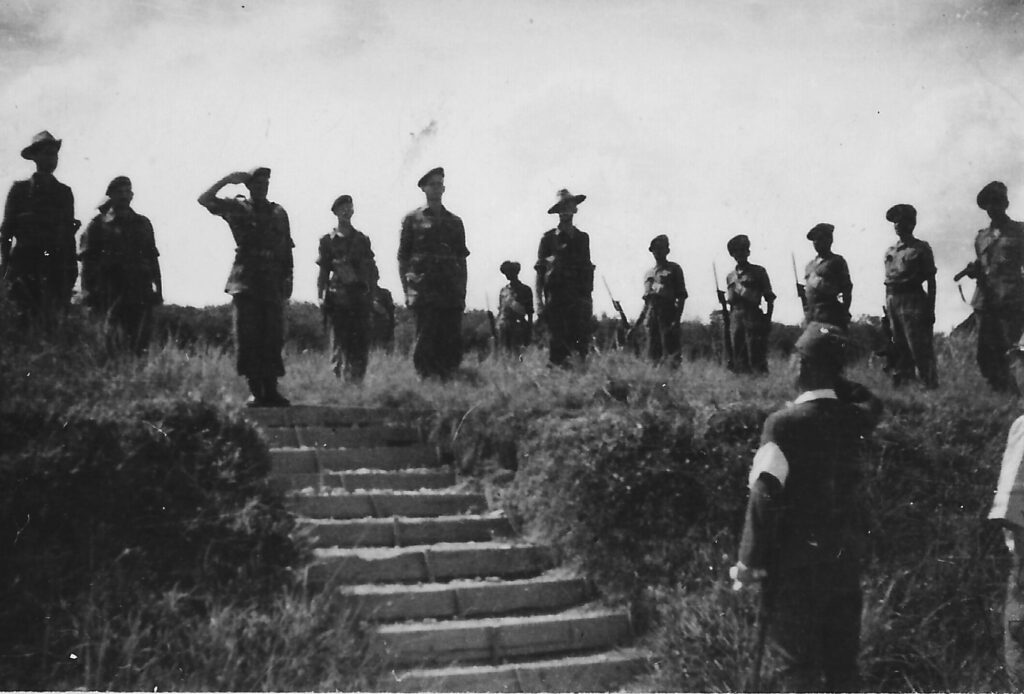
Japanese surrender, Kuala Lumpar, September 1945 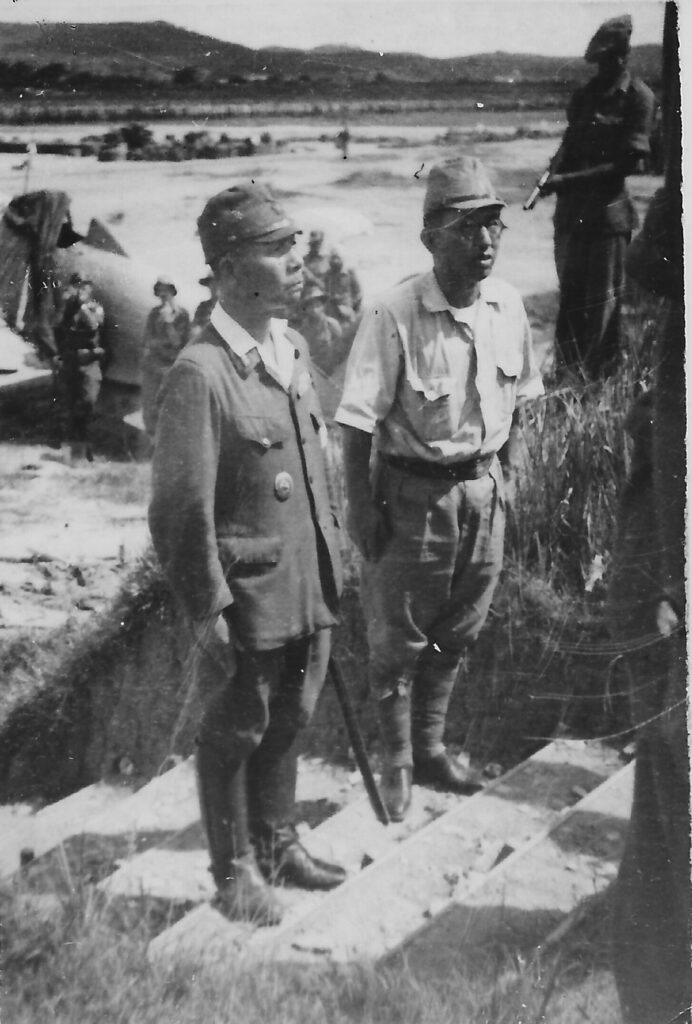
Japanese surrender, Kuala Lumpar, September 1945 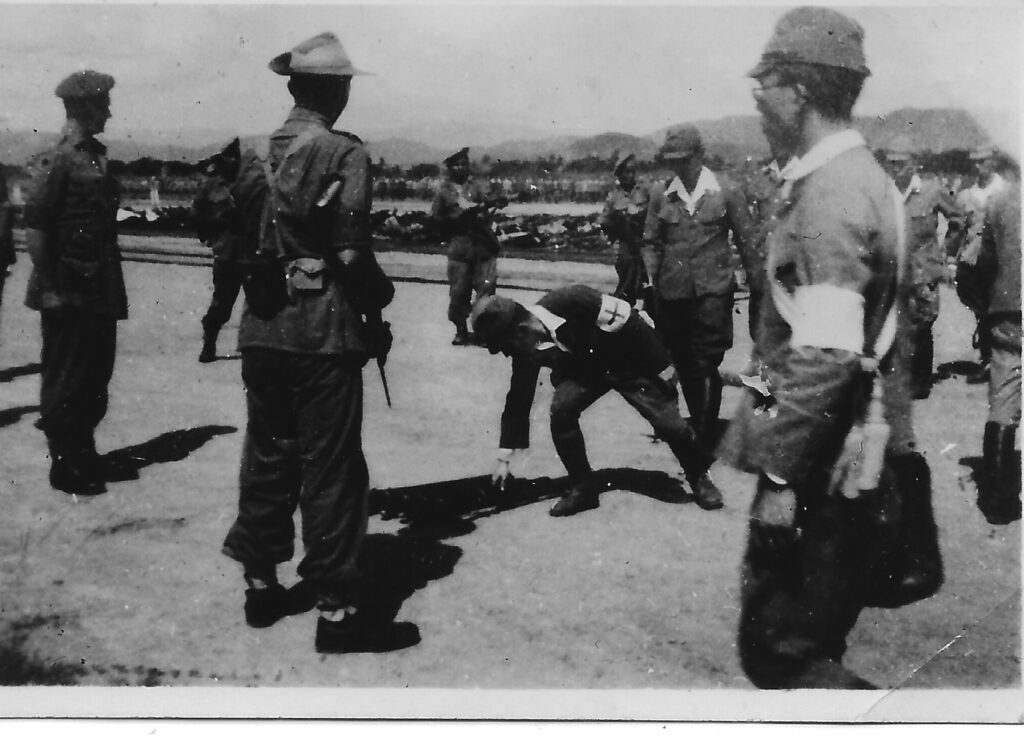
Japanese surrender, Kuala Lumpar, September 1945
On arrival they found the gates guarded by eight or so Japanese soldiers, who let them in.
Although Japan had announced its surrender on 15th August 1945, the documents were not signed until September, Fighting in some areas continued until December.
During his time there Jim was put in charge of a Japanese officer and 2 soldiers on the project of building a cinema. Realising that he didn’t have enough manpower, Jim asked for more and was given another 2 Japanese soldiers who then built the projection room where Jim installed the projection equipment he had been given by US troops whilst in Burma.
On eventually being told that he was going home, Jim objected because he hadn’t seen Singapore, only to be told that was where he was going.
Jim left Singapore by air in late December 1945 and, six weeks later, after various stopovers, he landed at Bournemouth on 13 February 1946, a civilian once more. He took the train to London and then on to see his girl in Southport. Jim joined ICI in 1949 and rose to the post of Shift Manager in the Engine Room. Following retirement he spent several years as an Usher in the local Magistrates’ Courts.
Jim is now 95, looks younger than his age, and has lived in Weaverham since 1949.
He took the salute at the inauguration of the Memorial Orchard in 2016.


